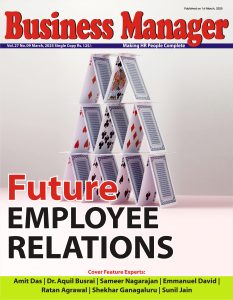“Financial Wellness” is one big parameter besides “Physical and Mental Wellness”.“Nearly 73% of employees in India report being stressed about their finances, and this stress directly impacts workplace productivity and overall engagement,” reveals a recent survey by Deloitte[1]. With financial concerns ranking as a top stressor for employees, organizations are beginning to recognize the tangible benefits of addressing this issue. Financial stress often leads to reduced focus, absenteeism, and even higher attrition rates, costing companies billions in lost productivity. As new-age companies strive to position themselves as employee-first, financial wellness programs are emerging as the missing link in the corporate wellness ecosystem, complementing existing initiatives in mental and physical well-being.
The Evolution from Employee Benefits to Holistic Wellness
Historically, most companies in India have focused on providing attractive salaries and standard employee benefits such as health insurance or subsidized gym memberships. However, as the talent market evolves, these perks alone are no longer enough. According to a report by MetLife, companies with robust wellness programs experience 69% higher employee retention and see a significant boost in workplace satisfaction[2].
Also read – Leave encashment is a constitutional right: Gujarat HC
With millennials and Gen Z forming a large portion of the workforce, these employees seek employers who support their careers and personal goals, including financial security. To address these gaps today, young entrepreneurs of Fintech startups, such as Cashvisory, have identified this need and are working to bridge the gap by offering financial literacy programs tailored to the modern workforce. These programs are also designed to end to end to help employees address different needs and fulfill different milestones at each stage of their lives. These initiatives aim to help employees better manage their finances, plan for the future, and reduce money-related stress.
“Employees today want more than just a paycheck—they expect guidance on managing their finances and achieving life goals,” says Arpita, Co-founder of Cashvisory. “We’ve seen a huge demand for financial wellness programs, especially during our corporate sessions, where young professionals are eager to learn about tax planning, investments, and debt management.”
How Financial Wellness Impacts Corporate Success
Companies that prioritize financial wellness see measurable benefits, including lower employee stress, reduced attrition rates, and better overall engagement. A PwC study highlighted that financially stressed employees are five times more likely to be distracted at work and twice as likely to miss workdays[3]. This trend is especially evident in India, where financial literacy levels are significantly lower compared to global standards.
Workshops and programs offered by startups in this space have uncovered striking gaps in employee financial literacy. For instance, while many employees might have investment accounts, only a fraction actively manage or grow their wealth. Addressing these gaps not only empowers employees to make informed financial decisions but also fosters a more engaged and focused workforce. Some companies have even launched targeted initiatives, such as women-focused sessions, to encourage financial empowerment among underrepresented groups in the workplace.
Why New-Age Companies Need Financial Wellness Programs
Leading organizations like Infosys and Tata Steel have already incorporated financial wellness into their HR strategies. These companies understand that 94% of employees are more likely to stay longer if an employer invests in their overall well-being, according to Gallup[4]. However, while most employers have focused on mental and physical health, financial wellness remains an untapped opportunity for HR leaders to differentiate their organizations in the competitive talent market.
“Financial literacy is no longer optional—it’s a must-have skill for every working professional,” says Utkarsh, Co-founder of Cashvisory. “Employers who provide resources for financial planning aren’t just supporting their workforce; they’re building trust, loyalty, and stronger teams.” Startups focusing on financial wellness are helping companies integrate these initiatives into existing HR frameworks, offering accessible and actionable financial education to employees.
The Future of Employee Engagement
As businesses seek to remain competitive in an evolving corporate landscape, financial wellness programs are poised to become a cornerstone of employee engagement strategies. A financially secure employee is not just happier—they’re more productive, focused, and loyal. For HR leaders, incorporating financial wellness into their initiatives offers a unique opportunity to enhance workplace satisfaction and strengthen the employer-employee relationship.
By addressing the financial literacy gap and fostering a culture of financial security, organizations can create a workforce that is empowered, engaged, and ready to thrive in the modern economy.
References:
- Deloitte India Workforce and Well-Being Report, 2023
- MetLife Employee Benefits Trends Report, 2023
- PwC Employee Financial Wellness Survey, 2022
- Gallup Workplace Well-being Study, 2022
Stay connected with us on social media platforms for instant updates click here to join our LinkedIn, Twitter & Facebook
























